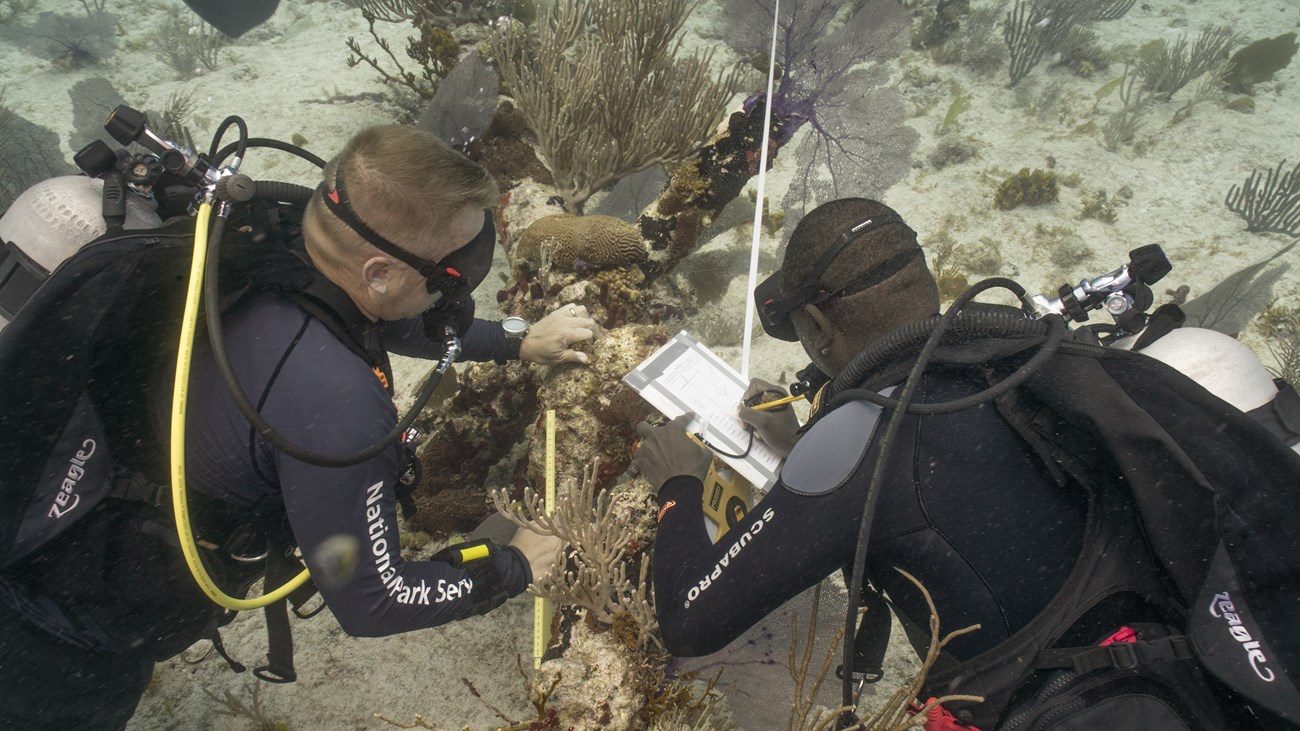Last updated: May 24, 2022
Article
The Slave Wrecks Project at Christensted and Buck Island
About the Project
The Slave Wrecks Project is an international partnership between institutions in the United States, the Caribbean, and Africa. These institutions include the National Park Service (through the NPS Southeast Archeological Center and the NPS Submerged Resources Center), the Smithsonian National Museum of African American History and Culture, the George Washington University – Capitol Archaeological Institute, Diving with a Purpose, the Iziko Museums of South Africa, the South African Heritage Resources Agency, and the African Centre for Heritage Activities. Its aim is to learn about the global slave trade through historical and archeological work, build local capacity for heritage resource management, and conduct public education.
When the partnership began in 2010, the Slave Wrecks Project focused on submerged resources in South Africa and Mozambique. Since then, the scope of the project has expanded to address the global impact of the slave trade by searching for submerged resources between Mozambique and South Africa and also Senegal in Africa, Brazil in South America, and Cuba and St. Croix in the Caribbean. This international collaboration has fostered an environment of discussion, shared training and increased interest in documenting heritage resources related to the Trans-Atlantic Slave Trade, while providing exciting opportunities for new research into this subject on both sides of the Atlantic.
Slaver Ships at Buck Island
Slaver ships named the Mary (sunk in 1797) and the General Abercrombie (sunk in 1803) both wrecked near Buck Island. Using a submersible magnetometer, archeologists with the Southeast Archeological Center and the Submerged Resources Center attempted to locate the wrecks and other submerged resources related to the slave trade. They located many ferrous anomalies, including a few shipwrecks and historic anchors. Although one of the anchors dated to the time of both of the wrecks, definitive evidence for the Mary and the General Abercrombie was not found.
A Slave Market at Christiansted
Historic documents showed that the West India and Guinea Company Warehouse once stood near Fort Christianvaern. The warehouse was a slave market from shortly after the island became a Danish holding until about 1754, when the loosening of trade restrictions allowed several new private markets to develop and open across the town of Christiansted. The NPS Southeast Archeological Center used ground penetrating radar (GPR) to look for the site. Some anomalies lined up with historic maps, suggesting that evidence of the warehouse complex survived below the surface.

Community and Youth Engagement
The NPS developed a community archeology program through the Slave Wrecks Project to conduct terrestrial excavations on CHRI park property at sites related to the island’s slave trade history. Student interns from the Greening Youth Foundation, the University of the Virgin Islands, and the University of Aarhus, Denmark also joined the excavation, as well as local high school students working through the Youth Conservation Corps. They assisted archeologists at the site of the West India and Guinea Company Warehouse, with testing anomalies detected by GPR thought to have been where people enslaved at the warehouse lived and worked. They were called “Royal Slaves,” meaning they were property of the Danish government. While the field crew confirmed that parts of the structures still remained underground, they recovered few artifacts, which might have provided insight into the people who lived there.
